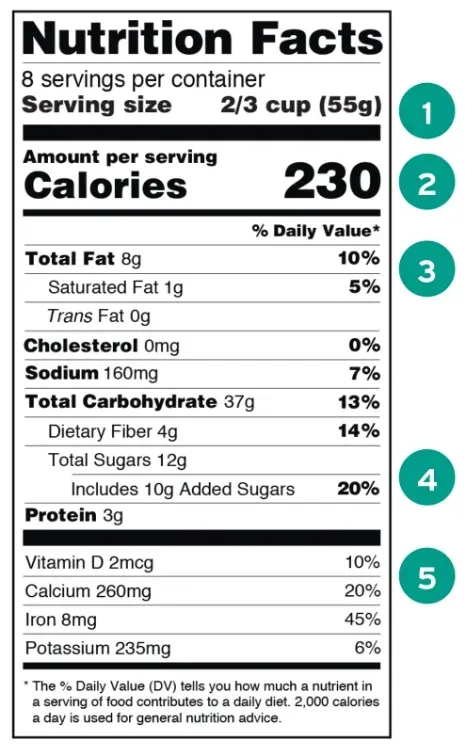If it’s been a while since you’ve noticed one of those Nutrition Facts labels on a food item in the grocery store, you might want to take a look.
Based on updated scientific information, new nutrition research, and input from the public, the Food and Drug Administration (FDA) has updated the Nutrition Facts labels for all packaged foods and drinks to help consumers make informed food choices that can contribute to lifelong healthy eating habits.
What information has been revised or redesigned?
- Serving Sizes: Servings per container and serving size information now appear in a large, bold font. Some of the serving sizes have also been updated to better reflect the amount people typically eat and drink.
The nutrition information is usually based on one serving of the food, but some containers may also have information displayed per package.
Items that seem like single servings — like a bottle of soda or a can of soup — usually contain more than one serving. On the new label, the nutrients are required to be labeled as one serving since that’s usually how those foods are consumed — in one sitting.
- Calories: This number is now larger and bolder to make it easier to find.
According to the FDA, 2,000 calories a day is a guide for general nutrition advice. Your calorie needs may be higher or lower depending on your age, sex, height, weight and physical activity level.
- Percent of Daily Value (%DV): Daily Values for nutrients have been updated, which may make the percent Daily Value higher or lower on the new Nutrition Facts label.
As a general guide:
- 5% DV or less of a nutrient per serving is considered low.
- 20% DV or more of a nutrient per serving is considered high.
What information has been added?
- “Added sugars” is new to the label because consuming too much added sugar can make it hard to meet nutrient needs while staying within calorie limits.
Added sugars include sugars added during the processing of foods (such as sucrose or dextrose), and sugars from concentrated fruit or vegetable juices. The USDA recommends no more than 10% of your daily calories come from added sugar — and other organizations, like the American Heart Association, recommend even less.
Vitamin D and potassium are now required to be listed because Americans don’t always get the recommended amounts.
- Diets higher in vitamin D and potassium can reduce the risk of osteoporosis and high blood pressure, respectively.
What information stayed the same?
Calcium and iron are still listed because Americans don’t always get the recommended amounts.
- Diets that are higher in calcium and iron can reduce the risk of osteoporosis and anemia, respectively.
What information has been omitted?
Vitamins A and C are no longer required on the label because deficiencies of these vitamins are rare today. But food and beverage companies can include them on a voluntary basis.
Calories from fat have also been removed because research has shown that the type of fat you eat is more important than the amount.
- But both saturated and trans fats are still listed. That’s because eating too much of these types of fats can increase your risk of heart disease. Try to limit your saturated fats to less than 10% of your daily calories. Trans fats don’t appear to have any known health benefits — experts recommend keeping your intake of these as low as possible.
How can the new label can help me?
The updated Nutrition Facts label can help you make choices that support your dietary needs. Your specific health requirements will determine which nutrients you need more of and which ones you want to limit. Generally, people may want to choose foods that are higher in dietary fiber, vitamin D, calcium, iron and potassium — and limit saturated fat, sodium and added sugars. If you have questions, or before making significant changes to your diet, speak with your doctor.




